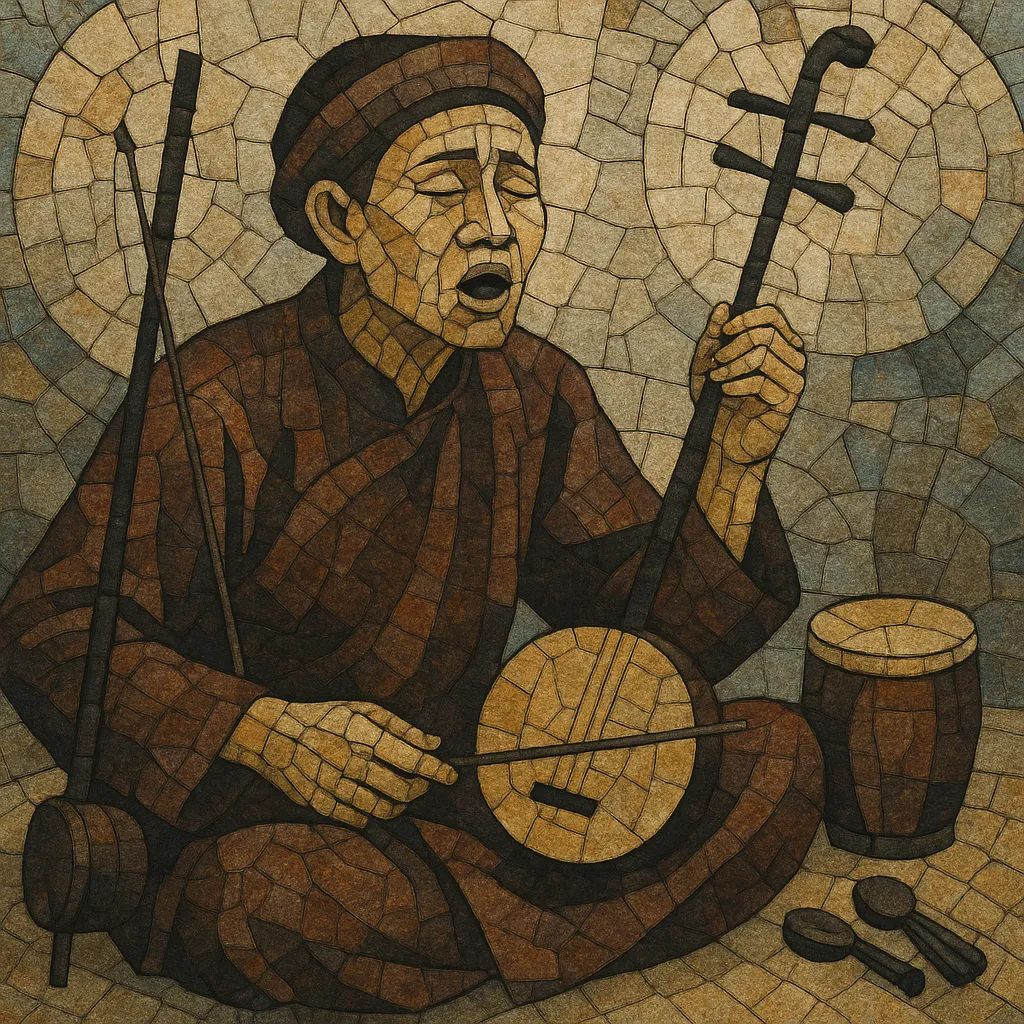Xẩm (hát xẩm) is a traditional Vietnamese street-singing genre associated with itinerant, often visually impaired musicians in northern Vietnam, especially the Red River Delta and Hanoi.
It features a narrative, speech-like vocal delivery over pentatonic melodic formulas, accompanied by compact, portable instruments such as đàn nhị (two‑string fiddle), đàn bầu (monochord), đàn nguyệt (moon lute), phách or song loan (wooden clappers), and small frame or tube drums.
Repertoires include moral tales, satire, news recitations, market-life vignettes, love songs, and improvised texts tailored to audiences in public spaces (markets, ferries, trams). The style blends free-rhythm recitative with lilting duple or triple meters, rich vocal ornaments (luyến láy), and heterophonic textures typical of northern Vietnamese folk performance.
Legends place xẩm’s beginnings in the Trần dynasty era, and documentary traces suggest northern Vietnamese street balladeers were active by the late medieval/early modern period. Xẩm singers—commonly blind or marginalized—used portable instruments and sharp wit to earn a livelihood while transmitting news, moral instruction, and entertainment in marketplaces, temple fairs, and village gatherings.
With the growth of Hanoi and northern towns under colonial modernity, xẩm adapted to new spaces—most famously the tramlines (“xẩm tàu điện”). Performers developed substyles (e.g., xẩm chợ/market xẩm; xẩm nhà trò/theatrical xẩm), diversified repertoire (satire, current events, romances), and honed crowd‑engaging patter. Recordings and early radio occasionally captured xẩm artists, helping fix certain melodic models and strophic forms.
After the 1950s, changing urban soundscapes, mass media, and new occupational opportunities reduced the number of itinerant troupes. Some melodies and narrative techniques migrated into theatre (chèo) and popular song, but public street performance of xẩm diminished, and many tradition bearers passed without successors.
Ethnomusicologists, theatres, and dedicated artists launched documentation and revival efforts. Field recordings of masters like Hà Thị Cầu informed teaching and reconstruction of tunes, rhythms, and vocal ornaments. Revival ensembles in Hanoi reintroduced xẩm in staged and semi‑public settings, experimented with new texts (including civic messaging), and collaborated across genres. Today, xẩm lives as both heritage performance and a flexible platform for contemporary storytelling rooted in northern Vietnamese folk aesthetics.


